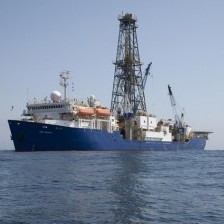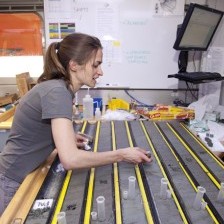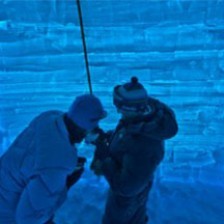The Past
What Were Ancient Oceans Like?
The oceans formed early in Earth’s history, playing a pivotal role in the development of the atmosphere and the livability of the planet. Indeed, the oceans served as an incubator for the first forms of life on Earth. As the planet has evolved over time, life has survived dramatic swings in climate from warm greenhouses to cold icehouses. In fact, for most of its history, the Earth’s climate has been very different from what it is today: the one constant is change.
Scientists speculate that at some point in the distant past the planet may have been completely frozen over, like a gigantic snowball. For the last 800 thousand years or so, ice ages have returned roughly every 100 thousand years, with only small windows of the mild, interglacial conditions typical of modern times. By contrast the planet was so warm 50 million years ago, there was no ice to be found at all.
Our interest in paleo oceans and climates is more than purely academic: the only way to understand the present and likely future of our oceans is by studying their past. Climate researchers depend on models to chart how our planet’s climate works today and to make predictions about its future. These models must also be tested against data from past climates.
Information about our climate’s history can be found, for example, in the chemical composition of shells found in sediments on the ocean floor, in air bubbles trapped in ice cores, in tree rings, corals, ancient sedimentary rocks, and many other natural archives. These proxy records force us to consider the major drivers of climate change. By examining the paleorecord, our researchers are developing a sense of what the range of possibilities are, testing our models against them, and placing constraints on likely future climates.
Researches at MIT and WHOI have a particular interest in the dynamics of ice ages, greenhouse worlds, and abrupt climate changes associated with mass extinctions that have punctuated Earth’s history.







